Showing Spotlights 81 - 88 of 559 in category All (newest first):
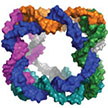 Nucleic acid nanoparticles (NANPs) have found success in a variety of biochemical applications ranging from nanoscaffolds for coordinated delivery of multiple therapeutic nucleic acids (TNAs) to potent immunoregulators and biosensors. Despite their potential, the true viability of NANPs and TNAs is limited by their relative chemical instability and sensitivity to higher temperatures. Shipping and transportation of NANPs and TNAs currently relies on a cold-chain storage. Newly developed methods could reduce the need for cold chain storage and dramatically improve vaccine shelf life.
Nucleic acid nanoparticles (NANPs) have found success in a variety of biochemical applications ranging from nanoscaffolds for coordinated delivery of multiple therapeutic nucleic acids (TNAs) to potent immunoregulators and biosensors. Despite their potential, the true viability of NANPs and TNAs is limited by their relative chemical instability and sensitivity to higher temperatures. Shipping and transportation of NANPs and TNAs currently relies on a cold-chain storage. Newly developed methods could reduce the need for cold chain storage and dramatically improve vaccine shelf life.
Feb 10th, 2022
 Being a relatively young field, Bionanotechnology is often neglected within undergraduate and postgraduate curriculum. With an increasing number of researchers and professionals of different backgrounds coming into the field, there is a clear need to have learning platforms that cover techniques, strategies and methods that characterise the design of bionano structures. In September 2021, Cambridge Advance Online, a new educational initiative created between the University of Cambridge and Cambridge University Press and Assessment, launched a 6-week online course about Bionanotechnology: Bionanotechnology from Theory to Practice.
Being a relatively young field, Bionanotechnology is often neglected within undergraduate and postgraduate curriculum. With an increasing number of researchers and professionals of different backgrounds coming into the field, there is a clear need to have learning platforms that cover techniques, strategies and methods that characterise the design of bionano structures. In September 2021, Cambridge Advance Online, a new educational initiative created between the University of Cambridge and Cambridge University Press and Assessment, launched a 6-week online course about Bionanotechnology: Bionanotechnology from Theory to Practice.
Jan 11th, 2022
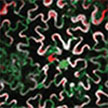 The development of plant genetic engineering lags behind the development of animal genetic engineering. Plant cells differ from animal cells in several aspects, a major one being that, in addition to the cell membrane, they possess a wall surrounding them to provide mechanical and structural support. In recent years, breakthroughs in nanotechnology for genetic engineering have provided more favorable tools for the genetic transformation of plants. A review summarizes the types of gene carriers used in plant genetic transformation, the ways of combining with foreign genes, and the differences and advantages compared with earlier traditional transgenic methods.
The development of plant genetic engineering lags behind the development of animal genetic engineering. Plant cells differ from animal cells in several aspects, a major one being that, in addition to the cell membrane, they possess a wall surrounding them to provide mechanical and structural support. In recent years, breakthroughs in nanotechnology for genetic engineering have provided more favorable tools for the genetic transformation of plants. A review summarizes the types of gene carriers used in plant genetic transformation, the ways of combining with foreign genes, and the differences and advantages compared with earlier traditional transgenic methods.
Jan 10th, 2022
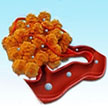 The diversity, complexity, and heterogeneity of malignant tumor seriously undermine the efficiency of mono-modal treatment. Recently, multi-modal therapeutics with enhanced antitumor efficiencies have attracted increasing attention. However, designing a nanotherapeutic platform with uniform morphology in nanoscale that integrates with efficient chem-/sono-/photo-trimodal tumor therapies is still a great challenge. Reseaerchers now designed a nanotherapeutic platform with uniform morphology in nanoscale that integrates with efficient chem-/sono-/photo-trimodal tumor therapies.
The diversity, complexity, and heterogeneity of malignant tumor seriously undermine the efficiency of mono-modal treatment. Recently, multi-modal therapeutics with enhanced antitumor efficiencies have attracted increasing attention. However, designing a nanotherapeutic platform with uniform morphology in nanoscale that integrates with efficient chem-/sono-/photo-trimodal tumor therapies is still a great challenge. Reseaerchers now designed a nanotherapeutic platform with uniform morphology in nanoscale that integrates with efficient chem-/sono-/photo-trimodal tumor therapies.
Oct 29th, 2021
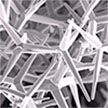 Researchers have developed an antiviral dressing material with visible-light-activated sterilizing properties that enables physical and chemical protection against viral agents like Herpes simplex. They re-engineered a common additive agent found in sunscreen (zinc oxide) to be self-sterilizing within a non-woven fibrous mats for herpes virus treatment. The self-sterilizing function creates a 'green' associated oxidant hydrogen peroxide (hydrogen peroxide), capable of eliminating harmful bacteria and viruses.
Researchers have developed an antiviral dressing material with visible-light-activated sterilizing properties that enables physical and chemical protection against viral agents like Herpes simplex. They re-engineered a common additive agent found in sunscreen (zinc oxide) to be self-sterilizing within a non-woven fibrous mats for herpes virus treatment. The self-sterilizing function creates a 'green' associated oxidant hydrogen peroxide (hydrogen peroxide), capable of eliminating harmful bacteria and viruses.
Oct 12th, 2021
 An interdisciplinary approach that integrates optics, bioengineering, and nanotechnology has led to the fabrication of a living optical hydrogel fiber with many applications, including cancer models, physical force sensing, and covid detection, among others. This work represents a simple and low-cost approach to fabricating optical fibers made from biological materials. These fibers can be easily modified for specific applications and don't require sophisticated equipment to generate relevant information. This method could be used for many practical sensing and biological modeling applications.
An interdisciplinary approach that integrates optics, bioengineering, and nanotechnology has led to the fabrication of a living optical hydrogel fiber with many applications, including cancer models, physical force sensing, and covid detection, among others. This work represents a simple and low-cost approach to fabricating optical fibers made from biological materials. These fibers can be easily modified for specific applications and don't require sophisticated equipment to generate relevant information. This method could be used for many practical sensing and biological modeling applications.
Oct 11th, 2021
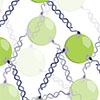 In addition to the plethora of functions such as storage of genetic information and regulation of its expression, DNA and RNA are also highly programmable biomaterials. DNA can be utilized to design short complementary sequences to be used as the linkers which bring together and organize other biological and inorganic materials. Quantum dots are one such inorganic candidate. Researchers now utilized DNA for the precise assembly of QDs into larger three-dimensional scaffolds.
In addition to the plethora of functions such as storage of genetic information and regulation of its expression, DNA and RNA are also highly programmable biomaterials. DNA can be utilized to design short complementary sequences to be used as the linkers which bring together and organize other biological and inorganic materials. Quantum dots are one such inorganic candidate. Researchers now utilized DNA for the precise assembly of QDs into larger three-dimensional scaffolds.
Aug 18th, 2021
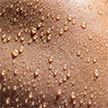 Self-charging biosupercapacitors (BSCs) that can store energy and be self-charged via chemical or solar energy conversion through bioreaction have recently attracted considerable attention. As human sweat also contains a high concentration of lactate biofuel, the harvesting and storage of the bioenergy in sweat holds the potential to provide the power for wearable electronics. A new wearable hybrid device functions as both a biofuel cell and a supercapacitor.
Self-charging biosupercapacitors (BSCs) that can store energy and be self-charged via chemical or solar energy conversion through bioreaction have recently attracted considerable attention. As human sweat also contains a high concentration of lactate biofuel, the harvesting and storage of the bioenergy in sweat holds the potential to provide the power for wearable electronics. A new wearable hybrid device functions as both a biofuel cell and a supercapacitor.
Jul 8th, 2021
 Nucleic acid nanoparticles (NANPs) have found success in a variety of biochemical applications ranging from nanoscaffolds for coordinated delivery of multiple therapeutic nucleic acids (TNAs) to potent immunoregulators and biosensors. Despite their potential, the true viability of NANPs and TNAs is limited by their relative chemical instability and sensitivity to higher temperatures. Shipping and transportation of NANPs and TNAs currently relies on a cold-chain storage. Newly developed methods could reduce the need for cold chain storage and dramatically improve vaccine shelf life.
Nucleic acid nanoparticles (NANPs) have found success in a variety of biochemical applications ranging from nanoscaffolds for coordinated delivery of multiple therapeutic nucleic acids (TNAs) to potent immunoregulators and biosensors. Despite their potential, the true viability of NANPs and TNAs is limited by their relative chemical instability and sensitivity to higher temperatures. Shipping and transportation of NANPs and TNAs currently relies on a cold-chain storage. Newly developed methods could reduce the need for cold chain storage and dramatically improve vaccine shelf life.
 Subscribe to our Nanotechnology Spotlight feed
Subscribe to our Nanotechnology Spotlight feed





